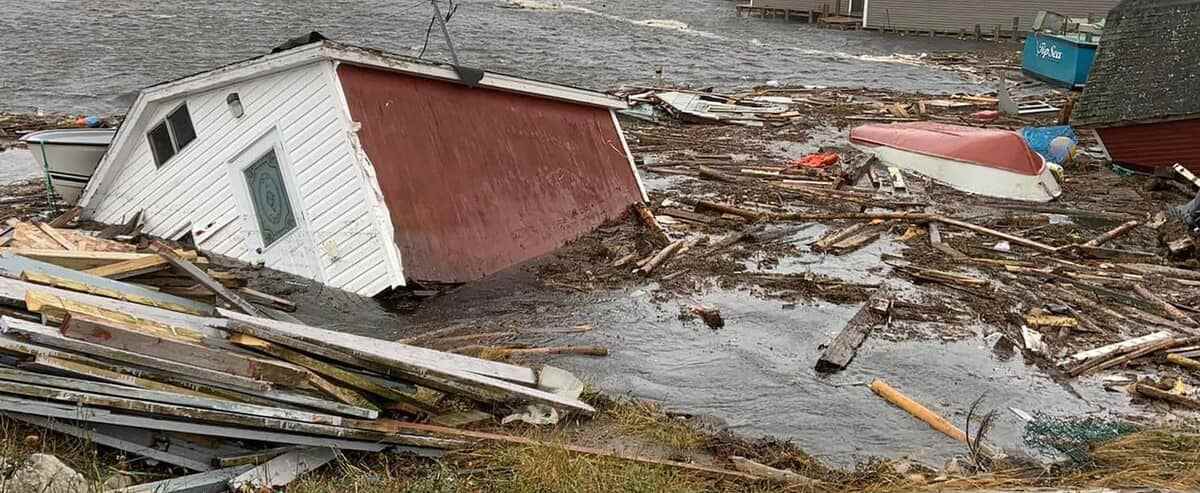Tropical Storm Ian, which upgraded to a Category 1 hurricane on Monday, threatens Cuba and Florida after Canada suffered massive damage during Fiona’s passage.
• Read also: Calm has returned to the Îles-de-la-Madeleine
• Read also: Launch of NASA’s mega-rocket canceled once again
“Ian is becoming a hurricane,” the US National Hurricane Center (NHC) announced on Monday, warning that “additional rapid strengthening is expected today.” The Saffir-Simpson scale of hurricane strength ranges from 1 to 5.
Ian was heading northwest, towards western Cuba and the Cayman Islands with sustained winds of 120 kilometers per hour, according to the NHC and the Cuban Meteorological Institute (Insmet).
It should affect Monday in particular the west of Cuba, with “significant impacts of the wind and the storm surge”, according to the NHC.
- Listen to the interview with Gaétan Richard, interim mayor of the Îles-de-la-Madeleine on Richard Martineau’s show broadcast live every day at 10:20 a.m. via QUB-radio :
The Cuban Civil Defense issued Monday morning a “cyclonic alert” for the six westernmost provinces of the island
“In view of the continuous deterioration of weather conditions for the western region (…) it was decided to establish from 08:00 (12:00 GMT) a cyclonic alert phase”, announced the general staff of the Civil defense.
The provinces of Pinar del Rio, Artemisa, Havana, Mayabeque, Cienfuegos and the island of Juventud, an island located 344 km south of the capital, are concerned.
In the “alert” phase, the authorities are preparing for evacuations in risk areas, as well as the installation of drinking water tanks and medical posts.
The largest island in the British Cayman Islands Territory, Grand Cayman, also issued a hurricane warning. Ian should be close to her on Monday.
Towards a “major” hurricane
The NHC had indicated on Sunday that it expected Ian to become a “major” hurricane in the next 24 to 48 hours, that is to say, according to its nomenclature, likely to inflict “devastating” damage, to damage houses, uprooting trees and disrupting the supply of water and electricity.
The organization qualifies as “major” hurricanes those whose winds reach at least 178 km/h, that is to say categories 3, 4 and 5 on the Saffir-Simpson scale.
Ian should go up, via the Gulf of Mexico, towards Florida which has already begun to take its precautions.
NASA has given up the takeoff scheduled for Tuesday of its new mega-rocket for the Moon, from the Kennedy Space Center located in this southern state of the United States.
A state of emergency was declared in all of Florida’s 67 counties and authorities were ramping up preparations.
Ian “will cause heavy rain, high winds, flash flooding and storm surges, as well as isolated tornadoes along Florida’s Gulf Coast,” Florida Governor Ron DeSantis warned Monday in Tallahassee. .
Some 5,000 members of the National Guard are mobilized, plus 2,000 reinforcements from Tennessee, Georgia and North Carolina, he said.
The governor asked residents to stock up on food, water, medicine and fuel as well as prepare for power outages.
Several municipalities in Florida, such as Miami, Fort Lauderdale or Tampa, have started distributing sandbags to residents to help them protect their homes from the risk of flooding.
Hillsborough (west), where Tampa is located, and Collier (southwest) counties have issued mandatory evacuation orders for the most vulnerable coastal areas.
“We didn’t make this decision easily, but the storm poses a serious threat,” County Administrator Bonnie Wise said at a press conference Monday.
US President Joe Biden has placed 24 of the counties in a state of emergency, allowing federal aid to be released.
After Fiona
Hurricane Fiona sowed death and destruction last week in the Caribbean, where at least seven people were killed, and Saturday on the Atlantic coast of Canada (two dead).
Fiona is now a post-tropical storm that weakens as it moves northward.
“At the end of the day, this will be the storm that has caused the most damage that we have ever seen,” commented Tim Houston, the premier of one of the most affected provinces, Nova Scotia, on CBC Sunday. News.
The hurricane had already killed at least seven people last week, including four in Puerto Rico, two in the Dominican Republic and one in Guadeloupe (France).


